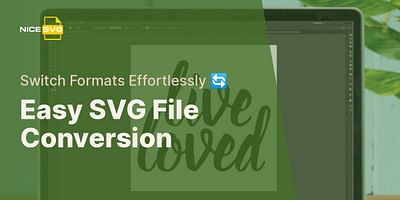Samantha Clarke is a seasoned graphic designer with over 15 years of experience in the industry. She has a deep understanding of SVG files and their applications in various design projects. Samantha is passionate about sharing her knowledge and helping others master the use of SVG files.
Hey there! When it comes to SVG files, choosing the right font size is crucial for ensuring your designs look their best. The recommended font size for SVG files depends on a few factors, such as the intended use of the file and the size at which it will be displayed. Let's dive into the details!
First off, it's important to understand that SVG files are scalable vector graphics, which means they can be resized without losing any quality. Unlike raster images, SVGs are not made up of pixels, so you don't have to worry about them becoming blurry or pixelated when you resize them.
When determining the optimal font size for your SVG file, consider the viewing environment. If your SVG will be displayed on a large screen, such as a billboard or a digital sign, you'll want to use a larger font size to ensure readability from a distance. On the other hand, if your SVG will be viewed on a small device, like a mobile phone or a smartwatch, you'll need to use a smaller font size to fit the limited screen real estate.
Another factor to consider is the complexity of your design. If your SVG file contains intricate details or small elements, using a larger font size can help maintain legibility and prevent any loss of detail when the file is scaled down.
Additionally, it's worth noting that different fonts have different x-heights, which is the height of lowercase letters without ascenders or descenders. Fonts with larger x-heights tend to appear larger than fonts with smaller x-heights at the same font size. So, if you're using a font with a large x-height, you might need to adjust the font size accordingly to achieve the desired visual impact.
As a general guideline, a font size between 10 and 14 pixels is often suitable for most SVG files. However, this is just a starting point, and you should always consider the specific requirements of your design and adjust the font size accordingly.
To make sure your SVG file looks great across different devices and screen sizes, it's a good idea to test it on various platforms and adjust the font size as needed. Remember, readability is key, so always prioritize legibility over aesthetics.
If you're unsure about the optimal font size for your SVG file, you can experiment with different sizes and preview the results in your design software or web browser. This way, you can fine-tune the font size until you achieve the desired look and feel.
I hope this helps you understand the recommended font size for SVG files! If you have any more questions about editing SVG files or need tips on using free SVG file converters, feel free to explore our website for more helpful resources. Happy designing!















